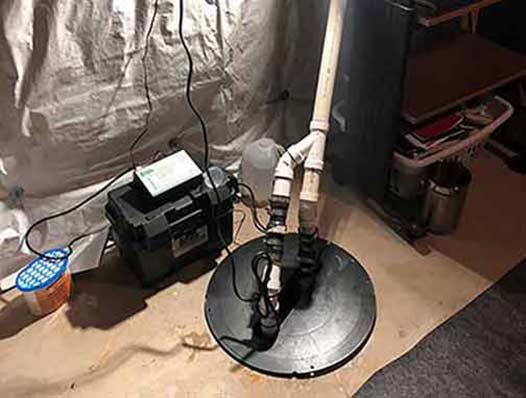
Spring means the return of fair weather and a chance to restart all those fun activities you abandoned because of winter. But spring also increases the risk of basement flooding due to snowmelt and spring rains.
Even if your home has a sump pump, you could still wake up one morning to a flooded basement. According to Trumark Real Estate Management, the only way to prevent this is to ensure the sump pump is in good condition and can always protect your home.
This post will show you how to care for your sump pump this spring.
Steps to prepare your sump pump system for spring
Test the sump pump
- Make sure the sump pump is connected to power.
- Using a 5-liter bucket or hose, pour enough water into the sump pit until the water raises the float and the pump is triggered.
- Listen for any strange sounds while the pump is working.
- Wait until the pit is empty to see if the pump will go off.
- Repeat the process for your secondary and backup sump pumps.
Inspect and clean the entire sump pump system
Clean the screen
Clogged filters can prevent your sump pump from properly functioning and force it to shut off prematurely. They can also introduce dirt into your sump pump. Unplug the pump and lift it from the pit to clean the filter. Hose the base and housing to remove any debris. If necessary, lubricate the pump bearings before returning it.
Clean the sump pit
If the pump is dirty, you will probably need to clean your sump pit. Before replacing the pump, sweep up any debris inside the pit. If it doesn’t have one, you may have to install a cover on your sump pit to keep debris out. After you return the pump to the pit, repeat step one to ensure the sump pump is working.
Inspect the check valve
The check valve keeps water from cycling back into the sump pit after it has been pumped out. A faulty check will overwork your pump and cause the motor to burn. Check that the valve’s internal flap is functional and not caked in mineral deposits. Make sure the arrow points upwards when reinstalling the check valve.
Check the discharge line
This pipe carries water from the sump pit to the discharge point in your yard. While running your pump, check the pipe’s opening to confirm if the water is flowing out. Ensure no blockages, such as snow, leaves, branches, or dead animals, are inside or around the pipe opening.
Check the GFCI outlet
By code, sump pumps must be plugged into a GFCI receptacle. Make sure the outlet’s green light is on. To double-check that the outlet is working and for your safety, press the test and reset buttons.

If your home is in a flood-prone area, it is recommended that you get a battery-powered backup pump along with your primary and secondary pumps.
Check for indoor water leaks
Indoor water leaks are a common cause of basement flooding. Check all water-utilizing appliances in your home, as well as plumbing fixtures and plumbing pipes for leaks. Follow these steps to detect or prevent water leaks inside the house.
- Ensure that your main water shut-off valve is accessible and functioning.
- Ensure your toilet, ceiling plumbing, etc, have dedicated shut-off valves.
- Check the toilet, bathroom, and water softener for leaks, cracked hoses, and loose connections.
- Check for water heater and drain pump leaks.
- Check refrigerator, ice maker, and dishwasher hoses for leaks.
- If possible, install steel braided hoses for your dishwasher and washing machine.
Install a secondary/backup sump pump
If your primary sump pump fails, your secondary sump will keep your home safe from basement floods. There are a range of scenarios in which the primary sump pump in your home could fail, and this can happen even if you maintain the pump regularly.
If the sump pump is rarely used, a primary and secondary sump pump setup should be enough for your home’s needs. But if the house is in a flood-prone area, it is recommended that you install a battery-powered backup pump along with your primary and secondary pumps.
Replace your sump pump if it is old
The average sump pump has a lifespan of around seven years, depending on how it is used and maintained. If your pump is nearing or past this age, replacing the sump pump with a new one is a good idea. This applies to your primary sump pump and secondary and backup systems.
In Conclusion
Having a sump pump in your home doesn’t guarantee that your home will be safe from basement flooding. The only way to protect your home from flooding this year is to keep the sump pump functional by following the steps above.